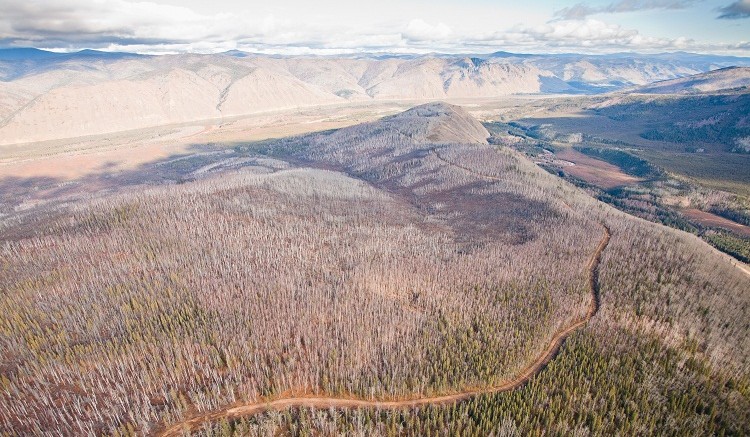The final stretch of 2012 was promising for for shareholders of Vancouver-based explorer Kaminak Gold (KAM-V). The company saw its share price rise 44% since Dec. 10 — jumping 44¢ before closing the week at $1.43 per share. Kaminak announced a maiden resource estimate for its flagship Coffee gold project in the Yukon’s White Gold district on Dec. 13.
Kaminak finished its 2012 drill program at Coffee in mid-October, totalling 348 holes over 69,100 metres. The company focused on defining gold resources within an oxidized rock profile that extends 200 metres below the surface of Coffee’s Supremo, Latte and Double Double zones. Kaminak later released an inferred resource composed of 90% oxide and transitional mineralization.
Coffee’s inferred resource totals 64 million tonnes grading 1.56 grams gold per tonne for 3.2 million contained oz. gold at a 0.5 gram gold cut-off. The resource breaks down to 28 million oxidized tonnes grading 1.64 grams gold for 1.5 million contained oz. gold, and 31 million transitional tonnes grading 1.41 grams gold for 1.4 million contained oz. gold. Kaminak also identified a sulphide resource totalling 5 million inferred tonnes grading 2.08 grams gold for 337,000 contained oz. gold.
Kaminak’s resource incorporates 130,000 metres of drilling completed since 2010, with the majority of the resource hosted in the Supremo and Latte zones. The Double Double and Kona zones contribute 11% of Coffee’s total ounces.
Kaminak has been working to refine its metallurgical understanding of Coffee’s resource, and received updated results from the Supremo, Double Double and Latte zones in mid-October. Simulated heap-leach results clock in at 90.4% gold recoveries after 80 days, including 83.2% recoveries over the first 15 days. Bottle-roll tests have returned 96.3% recoveries under carbon-in-leach conditions and 98.5% recoveries during carbon-in-pulp testing.
Kaminak CEO Rob Carpenter points out that the company is running at a discovery cost of roughly $15 per oz. at Coffee, adding that Kaminak’s drilling strike rate is a testament to the company’s understanding of regional geology.
“This resource estimate represents a major milestone . . . and highlights the deposit’s quality and ongoing exploration potential,” Carpenter said after the news release. “The continuity of the mineralized structures at shallow depths shows that our strategy and targeting technique drilling gold-in-soil anomalies is highly effective in this geological terrain. Based on the surface footprints of known gold in soil anomalies, [our] geologists see considerable expansion potential along strike from the current resource.”
In a bid to outline more gold-in-soil anomalies, Kaminak also collected 10,000 soil samples across its 600 sq. km land package during the 2012 field season. The company has explored 15% of the property, and maintains 20 km of untested soil anomalies.
One target that has received attention over the past 10 months is the Sugar zone, which lies 20 km southeast of Supremo. Kaminak released results from an initial 10-hole program at Sugar in early September, with highlights including 8 metres grading 2.3 grams gold from 30 metres depth in hole 1, and 19 metres averaging 1.3 grams gold from 180 metres depth in hole 2.
In November the company released another two holes at Sugar that were designed to test a northwest-trending soil anomaly. Results were less promising, with a 1-metre cut of 0.93 gram gold in hole 11 representing the best intercept.
Kaminak says it is fully funded for a 2013 exploration program, with $16 million in cash and no debt. The company has 82 million shares outstanding and a $110-million press-time market capitalization.
“We are preparing to continue with our aggressive pace of exploration in March 2013, and given that the initial column leach metallurgical results suggest that the oxide mineralization may be amenable to heap-leach processing, plans are also being made to undertake a comprehensive metallurgical testing program and commence preliminary economic studies,” Carpenter says.


Be the first to comment on "Kaminak tallies 3.2M oz. gold in Yukon"